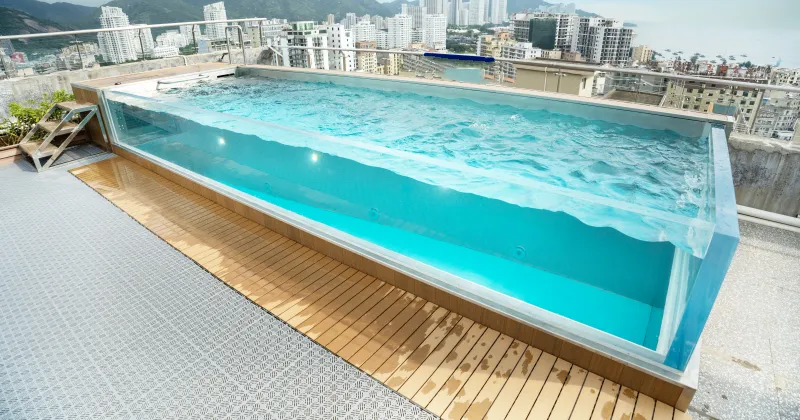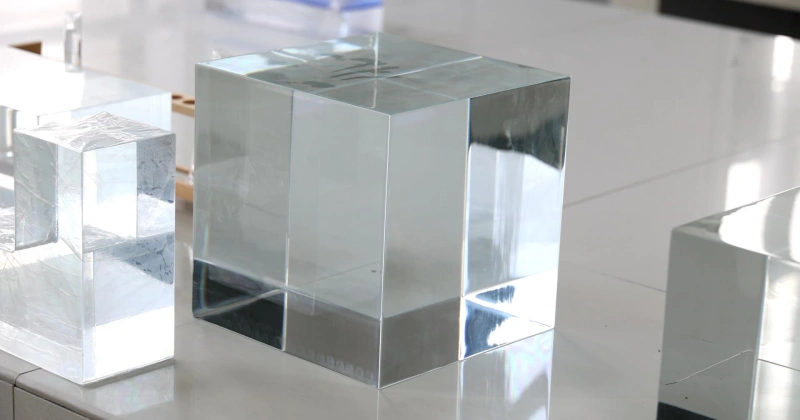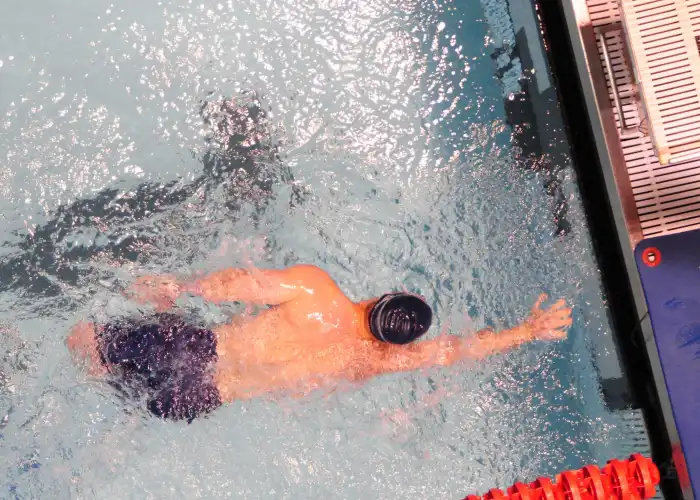
Why Counter-Current Swimming Pools Are Ideal for Post-Surgery Rehab
Have you ever wondered why so many athletes choose water therapy after an injury?
Recovery is not easy after any surgery. Your body needs time to recover, and in the meantime, even the simplest movements may become painful or challenging. While land exercises are also an option, they may cause excessive strain in your joints and muscles, especially in the initial weeks of your recovery.
That is why water therapy has gained popularity among many patients.
And when we talk about water therapies, we can not ignore a counter-current swimming machine. Unlike a traditional pool, this system produces a constant stream of water that you can swim or walk against without moving from one place to another. Think of it as a treadmill in the water. These machines turn even small pools into powerful rehab spaces, without needing a large area.
In this article, we’ll take a closer look at why water therapy is so important for healing after surgery, how counter-current pool machines provide a safe and effective environment, and what safety points to remember before beginning therapy.
Let’s dive in!
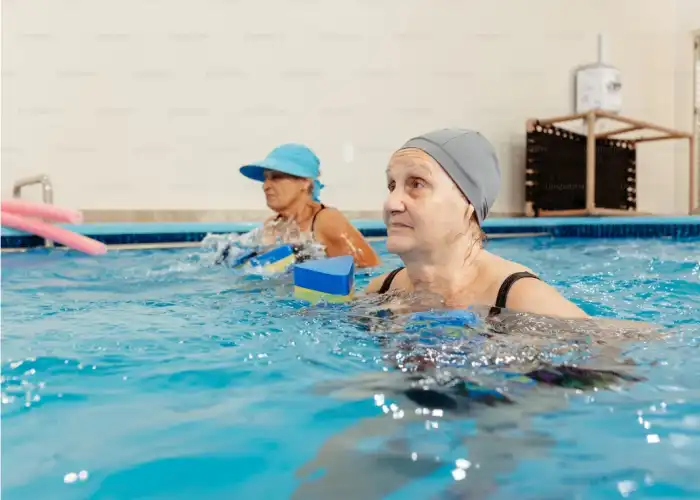
How water is important for your post-surgery rehab
Post-surgical recovery is slow and, in some cases, painful. Many people have problems with stiffness, swelling, or a fear of not moving the right way. Water can help with all of these problems. Once you get into a pool, you feel lighter because of buoyancy. This puts the weight off your joints and healing muscles. Movements that may feel too hard on land become much easier in water. That is why many doctors recommend aquatic therapy as part of rehab.
A study published in the Journal of Rehabilitation Medicine showed that patients who underwent water-based therapy after surgery gained the ability to walk about 20% sooner than patients who only underwent land-based rehabilitation. This is how water can help us make progress faster and in a safe way.
Low-impact environment
Water provides a low-impact environment, which means it allows you to move around without putting stress on healing areas. On land, each step you take bears weight on your joints, muscles, and bones. In water, the pressure is reduced. This allows people to work out without worrying about strain or pain.
A counter-current swimming machine makes this even better. Instead of swimming long distances, you can swim in place against a constant flow of water. This allows you to get the benefits of swimming without having a huge pool or doing a long lap.
Enhanced mobility and range of motion
Stiffness is one of the frequent problems after surgery. Swimming is a safe way to stretch the muscles and joints. Naturally, the resistance of water is well adapted to controlled, smooth stretching. This makes it more flexible over time and adds to the ease of daily activities such as walking, bending, or lifting light items.
A counter-current pool machine makes this even better, as you can change the current to suit your ability. Begin with a light stream and add resistance gradually as you become stronger. Water therapy is useful in the healing process because of its broad spectrum of applications.
Pain reduction and swelling control
Pain and swelling are a few of the typical problems you face during rehab. The water creates a gentle pressure, also called hydrostatic pressure, which helps to reduce swelling of the muscles and joints. The warm temperature of many therapy pools also relaxes muscles and reduces pain.
Counter current pools offer you the comfort of warmth and the exercise of moving water. This can help make sessions less painful and more enjoyable, encouraging regular therapy (a key to faster recovery).
Safe environment to rebuild balance
Some individuals find it difficult to walk after surgery. During the recovery, falling could be a life-threatening risk. Water gives you a healthy environment to learn to balance once again. And even when you lose your footing in water, you will not fall as hard as you do on land.
A counter-current pool provides a static yet demanding environment. The rushing water brushes against you, forcing your body to use balance and coordination. Over time, this develops confidence and reduces the risk of falls outside of the pool.
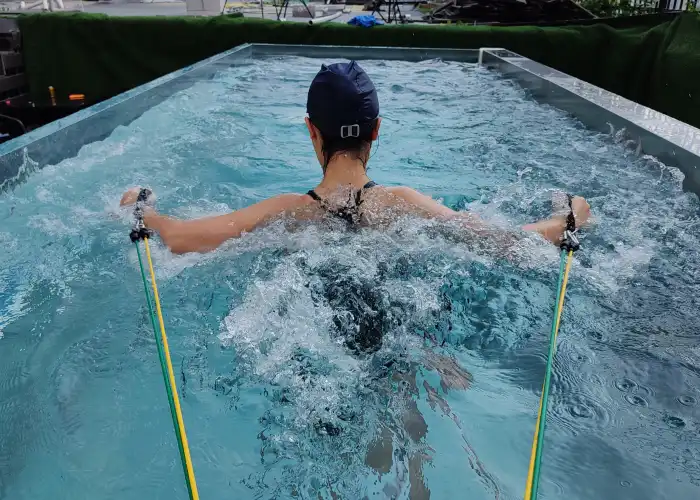
Specific benefits of counter-current pools
Counter-current pools are not just for athletes or fitness lovers. They are also powerful tools for people recovering from surgery. A counter-current pool machine creates a steady stream of water, allowing you to swim in place or perform exercises without needing a large swimming pool. Let’s look at some of the main benefits these systems offer during rehab.
Adjustable resistance
One of the best features of a counter-current swimming machine is its adjustable resistance. The strength of the water current can be changed to suit your needs. In the early days of recovery, you can keep the current light, making movements easier. As your body heals and grows stronger, you can increase the current for more challenge. This makes the machine useful at every stage of rehab.

Targeted muscle strengthening
After surgery, some muscles may get weak because of the lack of movement. Water exercises will help you build up these muscles without putting stress on your joints. The continuous flow from a counter-current pool machine gives constant resistance, so your muscles work with every move. This improves strength evenly across the body.
According to some reports, patients doing aquatic therapy gained 15% more muscle strength compared to those in land-based programs.
Space and accessibility
Not everyone has space for a large swimming pool at home or in a clinic. Counter-current pools solve this problem. They allow you to swim or exercise in a small pool, but the machine offers an endless swimming sensation. This makes them easier to use, both for homes and therapy centers.
Integrated hydromassage
Hydromassage is a method in which streams of moving water are used to gently massage the body. These water jets act on the sore or stiff muscles to loosen them. The massage effect also stimulates blood circulation, reduces swelling, and reduces pain levels.
Hydromassage can be used to relieve post-workout pain in a patient who has undergone surgery. It will help to reduce the tension in the muscles, heal tissues, and make the therapy session more pleasant. A massage in the water combined with light exercise is especially good when the body requires both movement and relaxation.
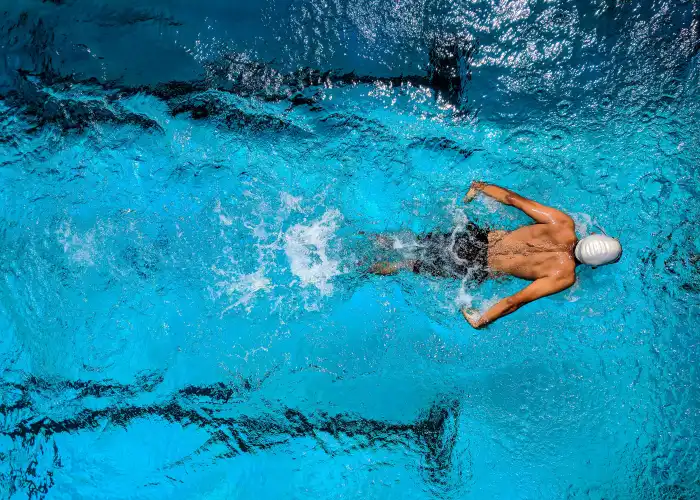
Mental health benefits of water therapy
Post-op recovery is not only about your physical health: it also affects your mental health. A lot of individuals get stressed, nervous, or even depressed during rehab. These feelings can be sorted out with water therapy. Also, the continuous stream of water is soothing and helps to relieve stress and boost mood.
Water exercise also produces endorphins: the natural feel-good chemicals of the body. A relaxed and confident mentality can positively affect the speed of recovery and make patients motivated during their rehabilitation process.
Things to watch out for before beginning your water therapy
Counter-current swimming machine water therapy can be a safe and effective component of your recovery. It allows you to work out in safe and controlled conditions, and also contributes to the recovery of your body. However, there are a few things you need to remember before you jump into the pool.
These are some of the tips that can make your rehab more effective and help you avoid problems.
Medical supervision
You should discuss with your doctor or physical therapist before you start any water exercises. Every surgery is different. Some can heal slowly compared to others. Your physician will tell you when it is safe to begin and which movements are appropriate for you.
The Cleveland Clinic states that individuals who adhere to recommended treatment recover approximately 30% more quickly than those who attempt this on their own. Having some guidance will make a huge difference in your progress.
Wound care
Water therapy can be risky in case your wound is still fresh. Pool water can easily infect open wounds and healing stitches. Never remove the stitches until your doctor tells you it's okay. Don't go in the pool if you still have stitches, staples, or bandages. Entering the water too soon can slow the process of healing or cause complications. At this point, patience is essential as it will contribute to a long and healthy recovery.
Water temperature
The pool temperature is also an important factor to consider. When the water is very cold, there is a risk that your muscles will contract, and the process will be slower. When the water is excessively hot, this may cause swelling, or you will feel uncomfortable. The majority of therapy pools maintain a temperature of 30 to 34 °C (86 to 93 °F). This temperature is warm enough to relax your muscles and joints but cool enough to perform exercise.
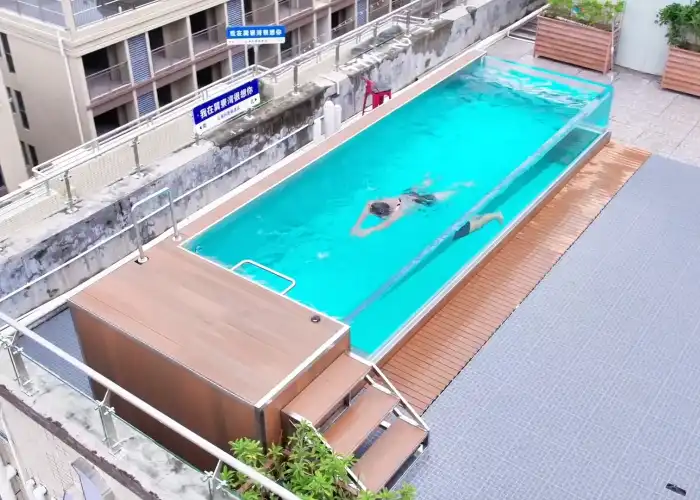
Conclusion
Recovery after surgery is slow, long, and requires support. Water therapy can help speed up this process, as it relieves pain, cushions your joints, and allows you to move again with confidence. Counter current pools are an excellent rehab companion, offering gentle and safe pool recovery, adjustable resistance, effective muscle training, and hydromassage.
If you’re ready to make your rehab smoother and more effective, check out our swim current machine. With the right counter-current system, you can turn your pool into a powerful partner in your healing journey.








